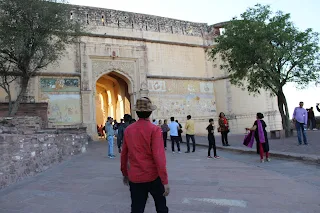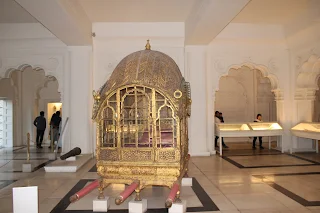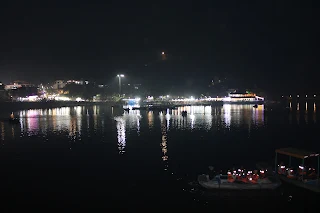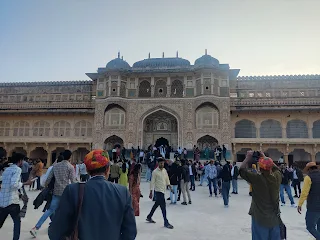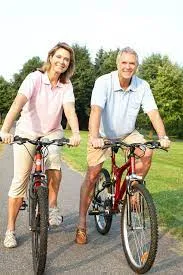How to make post-retirement
life happy and fruitful?
Why many
persons are not happy during their post-retirement life despite having
financial freedom and having no liability towards their children. Even after
achieving most of the things in life and free from financial problems, persons
are not happy. Let us find out the reasons why many persons are not happy
during their post-retirement life.
Let us find out the reasons
for happiness:
Before
finding out the reasons for unhappiness let us find out the reasons why
the persons should be happier during their post-retirement life.
(i) The foremost reason for happiness is not having any Boss during post-retirement
life. You are your own boss. You have all the 24 hours at your disposal which
you can utilise as per your desires and convenience.
(ii) Another reason for happiness is reduction in stress level after
retirement as you are free from job related stress during post-retirement
life.
(iii) You are not answerable to anyone except yourself. During
working life, you were answerable to your boss for your performance. You were
even answerable to your client.
(iv) During working life your plan for going to vacation tour was
subjected to sanction of leave by your boss. You are now free to plan your
vacation tour any time during the year as per your convenience.
(v) You can
choose to do any work as per your interest and liking which was not the case
before retirement.
Reasons for Unhappiness During Post Retirement life:
Despite
having strong reasons for happiness why some persons are unhappy during post-retirement
life? Generally,
most of the unhappiness are mental and not due to external factors. Let us discuss the reasons why many persons are unhappy
during their post-retirement life.
(i)
Having regret for non-achievement or under achievement during the past life is
one of the main reasons for unhappiness. Many persons are having regret for not
getting promotion, not getting reward for their performance, etc. Living in the
past and continuously remembering the failures during past life makes a person
unhappy in the present.
(ii)
Expectation of recognition and respects from ex-colleagues and other persons is
another reason for unhappiness. Many persons expects that they should continue
to get respect from their colleagues even after retirement. But that is not the
reality. When a person does not get respect as per expectation, they become
unhappy.
(iii)
Many retired persons are in the habit of giving free advices to family members
and friends. A person become unhappy when nobody listens to his or her advice.
Habit of giving free advices invites unhappiness in one's life.
(iv)
Spending most of the time in watching television also invites unhappiness.
Watching news in television for long duration feeds negativity in our
sub-conscious mind which ultimately creates unhappiness.
(v)
Excessive talking also leads to unhappiness. Many persons at this stage talk
more about their own achievements during their student and working life which
nobody want to listen. This creates frustration and unhappiness.
(vi)
Non utilisation or improper utilisation of free time due to lack of engagement
is another reason for unhappiness. Lack of engagement creates negative thoughts
in the mind which create unhappiness.
How to make your retirement life happy and fruitful?
If
you have to make your retirement life happy and fruitful then you have to
follow certain dos and don’ts. Let us first discuss about Do's and thereafter
we will discuss about Don’ts.
What you should do to make your retirement life happy and
fruitful?
(i) Take
Care of Your Health: It's very important to take care of your health.
You can enjoy your post-retirement life if your health is in good condition.
Health means not only your physical health but also your mental as well as
spiritual health. Maintenance of your physical health is very much essential to
do your day-to-day activities without any difficulties. It will reduce your
dependency on other person and will help you in enjoying your vacation tour. As
regards maintenance of good physical health, I have explained in details in my
previous blog the link of which is given hereunder. You may click the link the following
link to have details on maintaining good physical health during post-retirement
life.
https://post-retirementlife.blogspot.com/2022/04/physical-health-during-second-innings.html
It is also
very important to take care of your mental as well as spiritual health. Need for
taking care of one's mental and spiritual health has been explained in my
previous blogs the link of which are given hereunder.
(i) https://post-retirementlife.blogspot.com/2022/04/mental-health-during-second-innings-of.html
(ii) https://post-retirementlife.blogspot.com/2022/03/spiritual-health-during-second-innings.html
(ii)
Develop Good Friend circle: It is very important to develop good friend circle
near your surroundings. It is better to start developing friend circle well
before your retirement so that you can have some friends after retirement for
your socialisation. Friend Circle's composition should be diversified, both in
terms of professional and cultural backgrounds so that you can enrich yourself
with their wide experiences. Have a regular meeting and get together with them.
(iii) Have
a vacation tour, picnic and other amusement: Plan for vacation tour
at reasonable frequency with your spouse. Have both short tour and long tour at
certain interval which is comfortable to you. At least once in a year you
should go for picnic with your friends and family members. Have a visit to
nearby museum, park and other amusement centres for your recreation.
(iv) Make
daily contribution to your life: Please make an endeavour to make value addition to
your life. Please remember one thing that your scope for progress doesn’t stop
on retirement date. There is a scope for progress even after retirement. There
is always a scope for progress till you are alive. Ensure daily contribution to
your life for making it meaningful. Extend your helping hand to your spouse in day-to-day
routine household work. If you have a long-term plan for making some value
addition to your life, ensure to make daily progress in that direction. For
example, if you have decided to author a book which may take one- or two-years’
time to finish, then make a strategy to have a quarterly, monthly, weekly and
daily target to ensure consistent efforts in the direction of your goal.
(v) Pursue
your hobby: Every person is having at least one hobby which one
could not pursue during working or professional life. It is better to pursue
your hobby during post-retirement life which will make your life happy and
meaningful. It will also give you meaningful engagement.
(vi) Pay
back to Society: From childhood to adult stage most of the
investments were made for our personal development. During our working and
professional life, we worked for our livelihood for the development and welfare
of our family. This is the time to pay back to society when we don't have any
liability towards our children and passive income is sufficient to take care of
our expenditure. You may pay back to society by doing some charity or
philanthropical work which will give you peace of mind.
(vii) Mix
with the persons of all age group: There is a general tendency of a person to mix with
the persons of having same age group. It is advisable to mix with the persons
of different age groups so that you can enrich yourself with the varieties of
experiences of persons of different age groups. Persons of younger age group
may also be benefitted by enriching themselves with your experiences. Mixing
with young generation will abreast you with the latest development and trends
in the society.
(viii)
Develop your listening skill: It has been observed that with the growing age a
person is in the habit of talking more and listening less. Please
develop the habit of talking less and listening more. Talking
more without listening to other person antagonise the other person and you miss
some useful information which that person wants to convey. If you talk less and
patiently listen to other person then your image gets uplifted in the heart of
that person and you get enrich with the information provided by that person.
Please remember every person wants that he or she should be listened patiently
by others. If you also want the same then you have to develop the habit of
listening to others with patience.
What you should not do during post-retirement life
(i)
Never give free advices to anyone even to your family members. If you are in
the habit of giving free advices then you will be ignored and avoided by other
persons including your family members. Such situation will bring unhappiness in
your life. Never give advice to anyone unless someone seeks your
advice.
(ii) Never
permanently stay with your Children's family. Avoid staying with your
Children's family because your independence may get compromised to some extent.
If they request you to stay with them for some time which may be helpful to
them then you may stay with them to extend your helping hand. During your stay
with your Child's family maintain arm length distance and never interfere in
their family matters. Give them their personal space so that you will also have
the personal space for yourself.
(iii) While
talking to your children and grandchildren never say ‘during our time’ because
today's time is also yours since you are living today. Live in present instead
of living in the past. Never glorify past at the cost of present. There is a
general tendency of many old age persons to glorify the things in the past and
criticising the things in the present. Please remember that human civilisation
progresses with the passage of time. With the passage of time human
civilisation rectify the mistakes done in the past. Therefore, in general the
present is always better than the pasts.
(iv) Never
visit your previous office for mere socialisation. If you do so you will get
frustrated and demoralised. If you have any personal work for which you need to
visit your previous office then you should restrict your visit to that purpose
only. Please remember that in whatever position you might have been retired but
your presence in the office after retirement is not welcomed.
(v) Never
boast yourself in a friend circle about your position and importance in the
office before retirement. Nobody is interested to know your position and
importance in the office before retirement as we all know that the brand of a
fused bulb is hardly matter to anyone. Please remember you will be judged in
your friend circle based on your attitude and behaviour at present.
(vi) Never
be overenthusiastic in knowing what is happening in the office after your
retirement. I have seen some persons who are very enthusiastic to know what is
happening in the office after their retirement, who got promotion, who did not
get promotion, etc. These are none of your business. Your over enthusiasm to
know the present happening in the office may diminish your image amongst your
friends who are still working in the office.
(vii) Never
bother about the persons who are ignoring you. Instead of focussing on the
persons who are ignoring you it is better to focus on your family members and
friends who are taking care of you. Never give undue importance to the persons
who are ignoring you. It is better to ignore such persons who are ignoring you.
By following certain dos and don’ts as explained above one can
make post-retirement life happy and fruitful.

